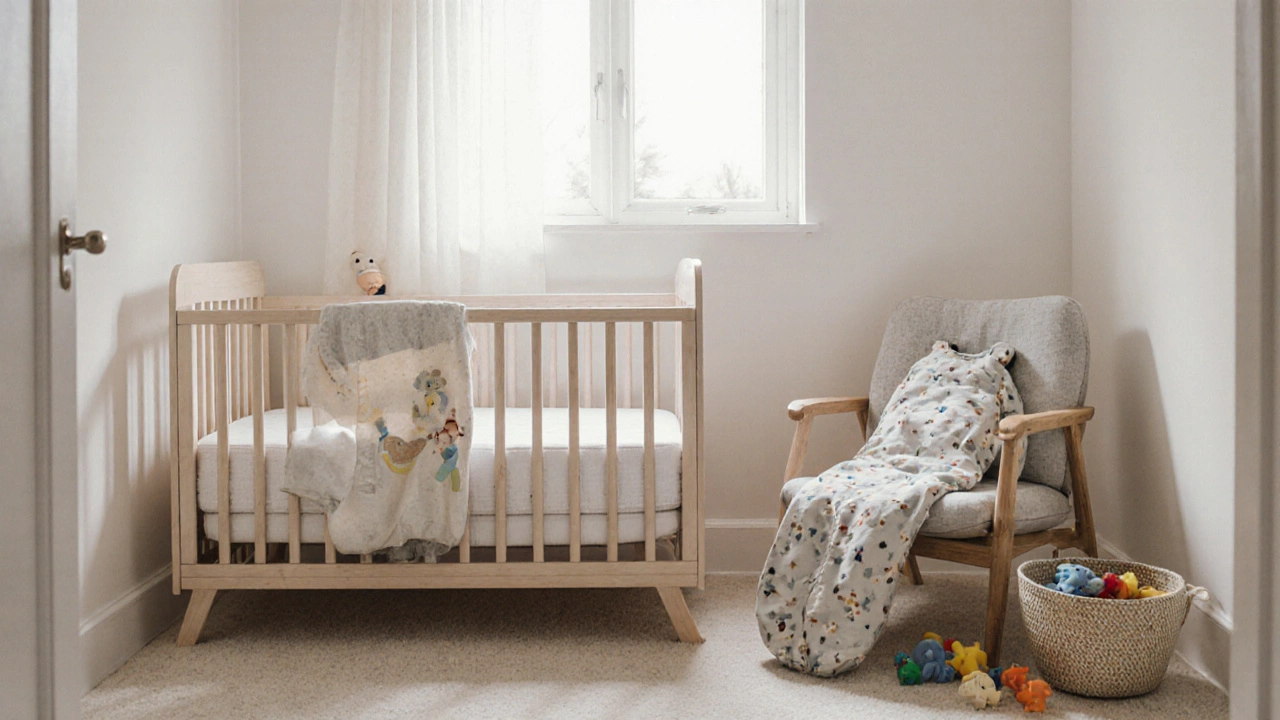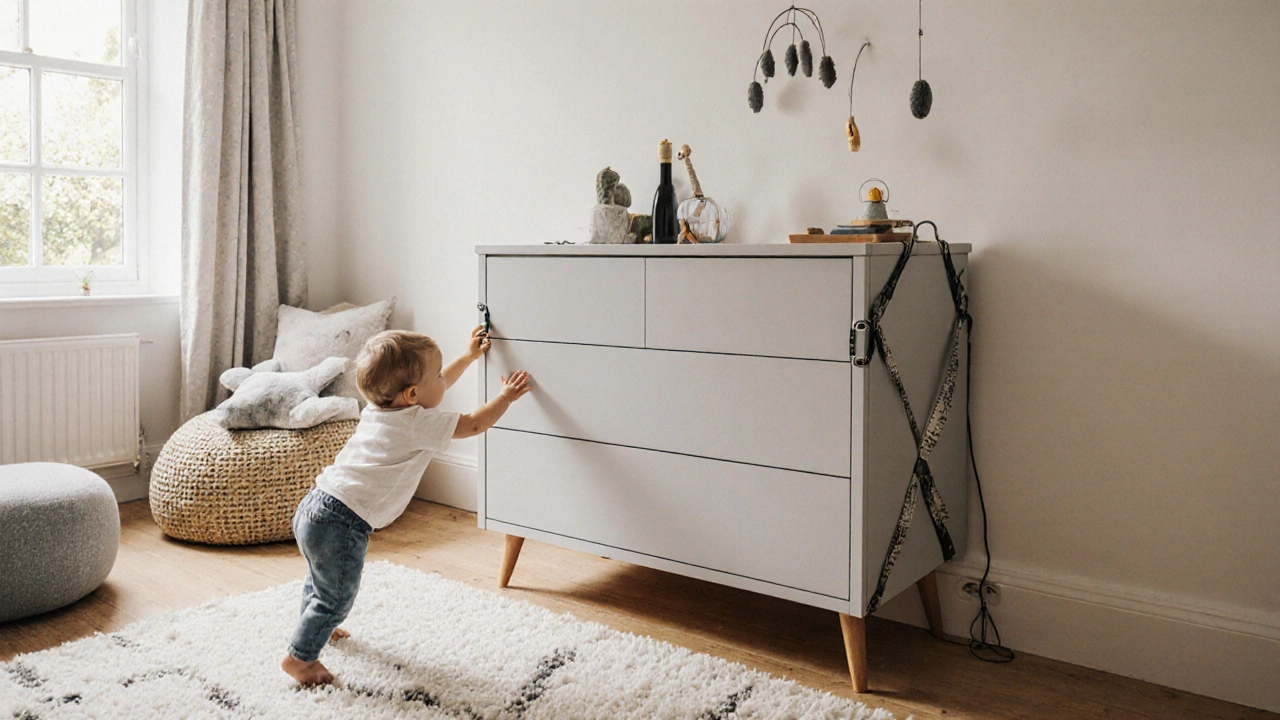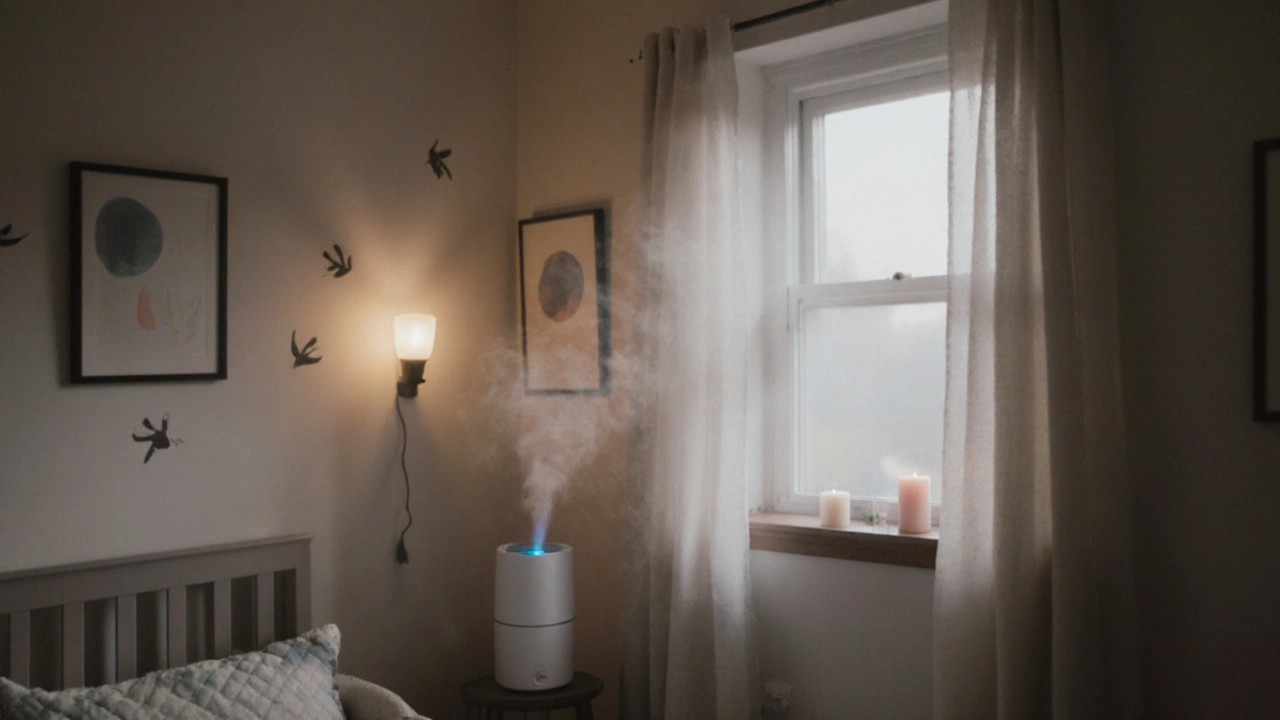What Not to Have in a Nursery: Safe and Smart Choices for Your Baby's Room

Setting up a nursery should feel exciting, not overwhelming. But too many parents fill the room with things they think they should have-until something goes wrong. A dropped toy, a loose cord, a wobbly shelf. These aren’t just minor annoyances. They’re risks. And the truth is, some of the most common nursery items are more dangerous than they look.
Don’t Put Soft Bedding in the Crib
The American Academy of Pediatrics says it clearly: no pillows, blankets, stuffed animals, or bumper pads in the crib. Not even for a minute. That fluffy bumper you saw on Pinterest? It’s a suffocation hazard. Studies show crib bumpers contribute to infant deaths every year-not because they’re poorly made, but because they’re unnecessary. Babies don’t need padding. They need space. A firm mattress with a fitted sheet is all that’s required. If you’re worried about your baby getting cold, use a wearable blanket or sleep sack. It’s safer, simpler, and just as cozy.Avoid Tall Dressers Without Anchoring
You love that mid-century dresser with the sleek lines. It matches your decor. But if it’s not secured to the wall, it’s a tipping hazard. Every year, over 15,000 children end up in emergency rooms because furniture falls on them. Dressers, bookshelves, TVs-it doesn’t matter how sturdy they look. A baby pulling up on the top drawer, or a toddler climbing to reach a toy, can bring it down. Use anti-tip straps that attach to wall studs. Don’t just use adhesive strips. They don’t hold under real weight. Anchor everything that’s tall and narrow. Even if it’s not in the nursery now, it will be soon.Skip Wall-Mounted Decor That Can Be Reached
Those cute wooden letters, framed art, or floating shelves? They look beautiful. But once your baby starts pulling up, they’ll grab anything within reach. Heavy frames can fall. Sharp corners can cut. Glass is a no-go. Even lightweight decor can become a projectile if it’s within reach. Keep wall decorations high-above 4 feet-or skip them entirely. If you want to decorate, use removable wall decals or soft fabric wall hangings that can’t hurt if they drop. Your baby’s first steps are unpredictable. Your walls shouldn’t be a hazard zone.Don’t Use Crib Mobiles with Long Strings or Detachable Parts
Mobiles are lovely for soothing babies. But those with long ribbons, cords, or small detachable pieces? Dangerous. Babies can get tangled. They can choke. Even if the mobile looks safe at first, it becomes a risk as soon as your baby can reach it. The AAP recommends removing mobiles when your baby can push up on hands and knees-usually around 5 months. If you use one, make sure it’s securely attached with short, non-removable strings. And never hang it directly over the crib. Hang it off to the side so your baby can’t grab it.
Leave Out Candles, Essential Oil Diffusers, and Incense
Aromatherapy might sound calming, but babies have sensitive lungs. Essential oils, even natural ones like lavender or eucalyptus, can irritate their airways. Candles and incense release soot and particulates that can trigger breathing issues. A 2023 study in the Journal of Pediatric Respiratory Care found that infants exposed to indoor scented products had higher rates of wheezing and coughing. If you want a calming scent, open a window. Use a humidifier with plain water. Keep the air clean. Your baby’s lungs are still developing. They don’t need extra chemicals.Never Use a Secondhand Crib That Doesn’t Meet Current Standards
Grandma’s wooden crib? It might be charming. But if it’s from before 2011, it likely doesn’t meet current safety rules. The U.S. Consumer Product Safety Commission banned drop-side cribs in 2011 after they caused dozens of infant deaths. Even if the crib looks fine, older models may have loose slats, gaps wider than 2 3/8 inches, or unsafe hardware. Always check the CPSC’s crib recall list. Buy new or certified used cribs that list compliance with ASTM F1169 or CPSC standards. Look for the certification label. If it’s not there, don’t risk it.Avoid Overcrowding the Room
It’s tempting to fill every corner with toys, books, and decor. But a cluttered nursery makes cleaning harder and increases fall risks. Babies don’t need 12 stuffed animals or five different nightlights. They need space to move, breathe, and grow. Keep the floor clear. Store toys in a low bin, not on shelves they can pull down. Choose one or two functional pieces-crib, dresser, rocker-and make sure they’re spaced so you can move around easily. Less is more. And less clutter means fewer things to clean, fewer things to worry about.Don’t Use Power Strips or Extension Cords Near the Crib
You need to plug in a nightlight, sound machine, and humidifier. But running cords across the floor or tucking them behind furniture is a recipe for trouble. Babies pull, tug, and chew. A loose cord can pull a lamp or TV down. Frayed wires can shock. Use a power strip with a safety cover and mount it high on the wall, out of reach. Never let cords dangle where a baby can grab them. If you can’t hide them safely, use battery-powered alternatives. It’s not about convenience-it’s about preventing accidents before they happen.